Complete Streets, Complete Communities Distance Learning Series
The Complete Streets, Complete Communities distance learning series is a set of seven online modules designed for public health and transportation professionals to learn about how to influence community health outcomes through local and regional transportation policies and practices, as well as about opportunities to collaborate across both sectors. This set of modules supports the work of CDC’s Active People, Healthy Nation℠ initiative.
Each module is self-paced and self-guided. Participants can choose to complete all the units in each module, or simply the ones that interest them. These modules are free of charge and currently only available to practitioners at state and local levels interested in influencing community health outcomes through local and regional transportation policies and practices. Preference will be given to recipients of REACH, HOP, SPAN, and BRIC cooperative agreements from the Centers for Disease Control and Prevention’s Division of Nutrition, Physical Activity, and Obesity.
To request enrollment in the distance learning module series, please complete this form.
The modules include pre-recorded presentations as well as interactive quizzes and activities to build knowledge and skills in the following areas:
Introduction to Complete Streets
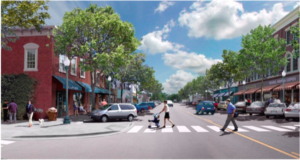
This module provides an overview of basic transportation terminology, details the components of a Complete Streets approach, and explains the historical and current practices in transportation that have created a need for Complete Streets policies. Below are the units covered in this module:
- Unit 1a: What are Complete Streets? (8 min)
- Unit 1b: Benefits of Complete Streets (9 min)
- Unit 1c: Case Study on the Benefits of Complete Streets (7 min)
- Unit 1d: Traditional vs. Complete Streets Planning Approaches (9 min)
- Unit 1e: Getting to Complete Streets: Complete Streets Policies (9 min)
- Unit 1f: Elements of a Complete Streets policy (16 min)
- Unit 1g: Module Recap (3 min)
|
Built Environment & Health Equity
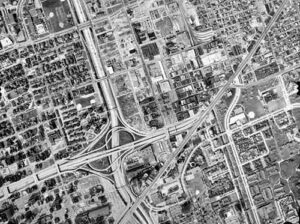
This module elaborates on the connection between the built environment and public health and explores specific examples of transportation, land use, and housing interventions to alleviate health disparities. Below are the units covered in this module:
- Unit 2a: Health in All Policies (9 min)
- Unit 2b: Social Determinants of Health (3 min)
- Unit 2c: The Role of Transportation and Land Use (16 min)
- Unit 2d: Housing and Health Disparities (8 min)
- Unit 2e: Module Recap (2 min)
|
Inclusive Community Engagement for Health Equity

This module discusses barriers to public engagement for communities impacted by health disparities and explores strategies to overcome them. Below are the units covered in this module:
- Unit 3a: Importance of Inclusive Community Engagement (13 min)
- Unit 3b: Considerations for Inclusive Community Engagement (17 min)
- Unit 3c: Barriers to Inclusive Community Engagement (10 min)
- Unit 3d: Inclusive Virtual Community Engagement (7 min)
- Unit 3e: Module Recap (2 min)
|
Building Coalitions for Health Equity

This module explains the steps to mobilize an effective cross-sectoral coalition including strategies for identifying stakeholders and establishing achievable, measurable goals. Below are the units covered in this module:
- Unit 4a: Coalitions 101 (10 min)
- Unit 4b: Forming a Coalition to Advance Health Equity (22 min)
- Unit 4c: Maintaining momentum (4 min)
- Unit 4d: Module Recap (3 min)
|
Creating Safer Streets
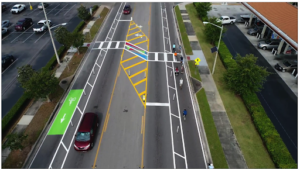
Quick Builds: This module describes the benefits of quick build projects, details best practices for implementing them, and provides case studies of real-life quick builds to improve health and safety. Below are the units covered in this module:
- Unit 5a: Defining Quick Builds (18 min)
- Unit 5b: Quick builds for safer streets (13 min)
- Unit 5c: Implementing quick builds (12 min)
- Unit 5d: Moving toward long-term solutions (7 min)
- Unit 5e: Module Recap (3 min)
|
Six Lessons for Effective Communication
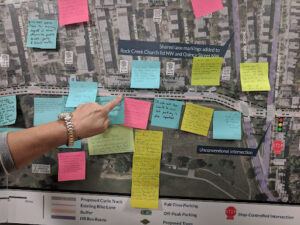
This module walks through six short lessons for crafting powerful messages that can fuel your efforts and communicate the benefits of Complete Streets and related safety interventions to multiple audiences. Below are the units covered in this module:
- Unit 6a: Tell powerful and strategic stories (with the best spokesperson) (8 min)
- Unit 6b: Stop expecting people to act rationally (4 min)
- Unit 6c: Find shared beliefs and speak into them. Stop trying to change them (4 min)
- Unit 6d: Use effective frames rooted in values that opponents won’t publicly refute. (6 min)
- Unit 6e: With your frame in place, pick words that work (3 min)
- Unit 6f: Remember that facts are meaning-less (3 min)
|
Transportation for Rural Communities
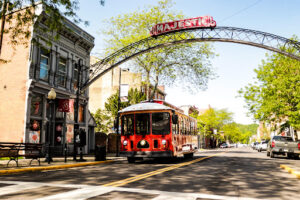
This module covers information and strategies to improve multimodal transportation access and active transportation in rural communities and small towns. Below are the units covered in this module:
- Unit 7a: Why is active transportation important in rural America? (19 min)
- Unit 7b: What is Rural? And what are Rural Typologies? (4 min)
- Unit 7c: Unique Needs of Rural Communities – Part I (19 min)
- Unit 7d: Unique Needs of Rural Communities – Part II (9 min)
- Unit 7e: Future of transportation in Rural America and how do we get there? (25 min)
- Unit 7f: Module Recap (2 min)
|






